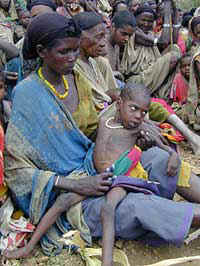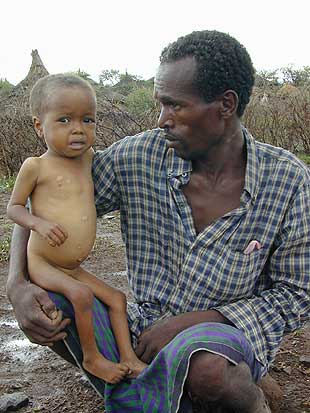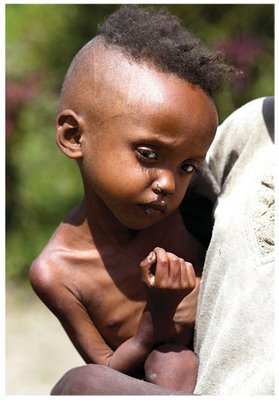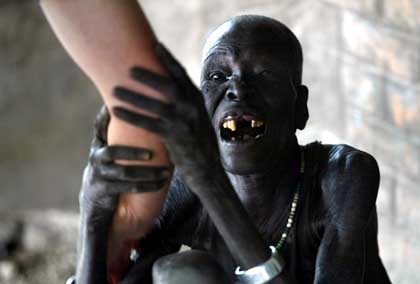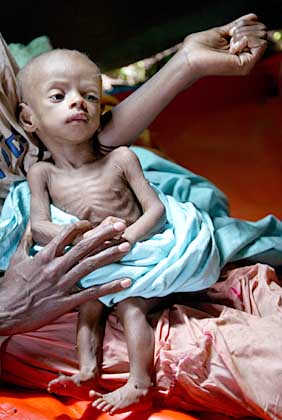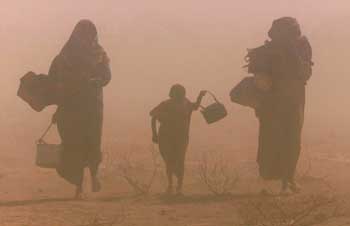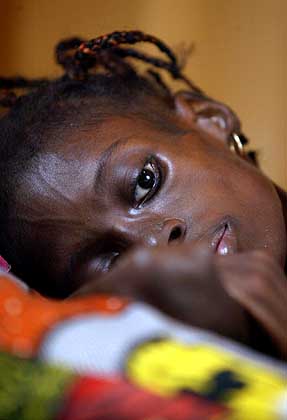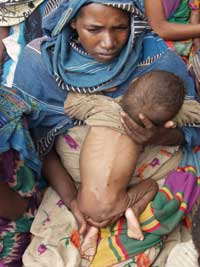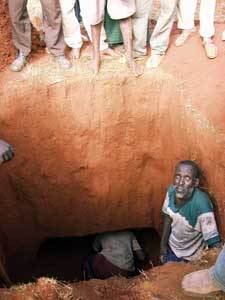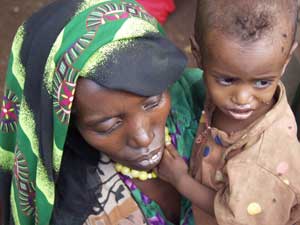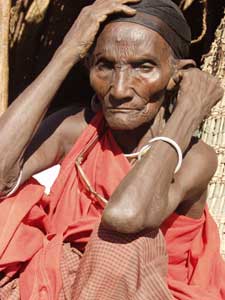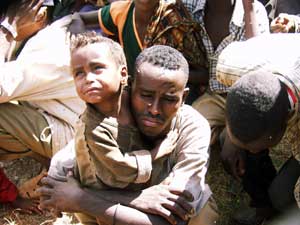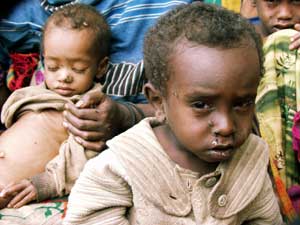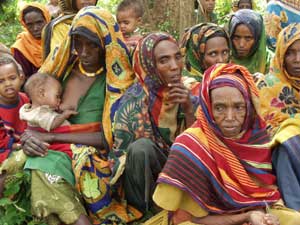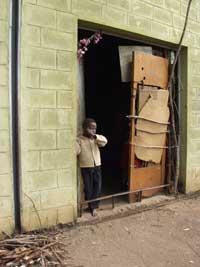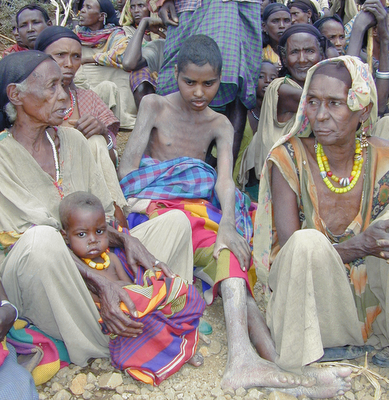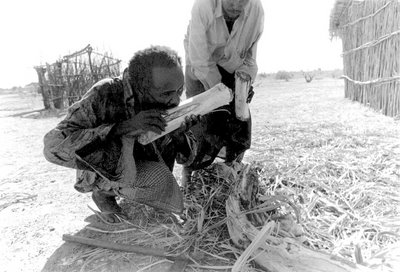Child Hunger in Ethiopia
This is so sad.
Food,
Medical care,
And there will be no more deaths.
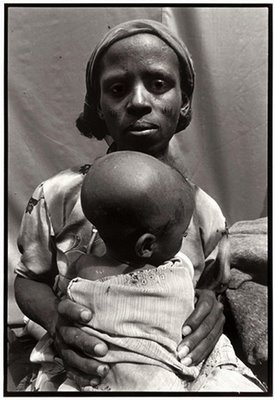
Zway, Ethiopia: This child may or may not live as a result of severe malnutrition. Babies born here do not receive names during the first month of their lives, for fear they may not survive.
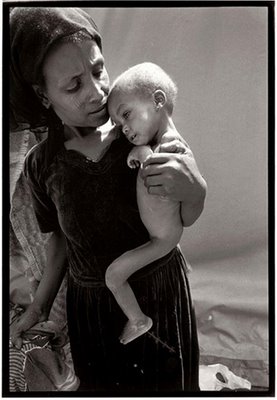
Zway, Ethiopia: A mother holds her two year old child, severely emaciated from lack of nutrition. Such scenes, reminiscent of the famine in the early 1980s, are due to severe drought which caused failed crops, malnutrition, and drought related diseases.
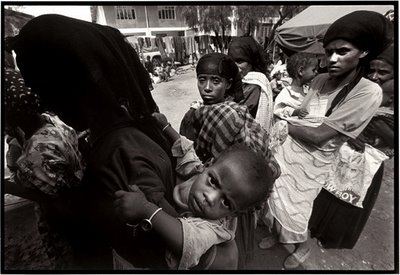
Zway, Ethiopia: Mothers wait to weigh in their children at the Therapeutic Feeding Center.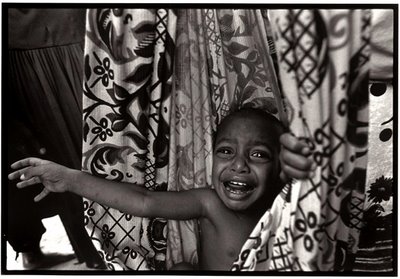
Zway, Ethiopia: Therapeutic Feeding Center.
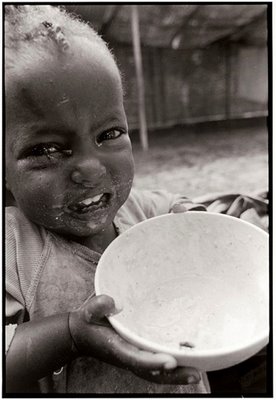
Zway, Ethiopia. Famix Rations at the Therapeutic Feeding Center.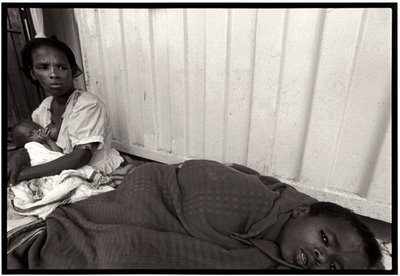
Zway, Ethiopia: Ailing 15 year old Hussein Nuru arrived a week ago with his mother, Jamila Ilhoro and baby brother. The family had to walk for 4 hours to get to the Therapeutic Feeding Center. Husseins father, sick at home for the past year, is unable to provide food for the family.
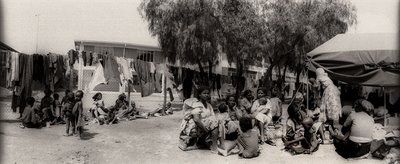
Zway, Ethiopia: The Therapeutic Feeding Center feeds 5,000 people and permanently houses 174. As the situation worsens, the numbers continue to grow.
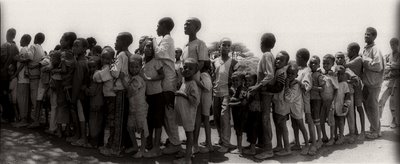
Boromo Waleda, Ethiopia: Children wait in line for a packet of crackers distributed by American and European volunteers.
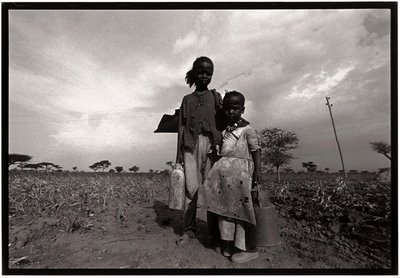
Oromia Region, Ethiopia: 12 year old Helo Bulfato and her 4 year old sister, Guye, carry water from a river to their home.
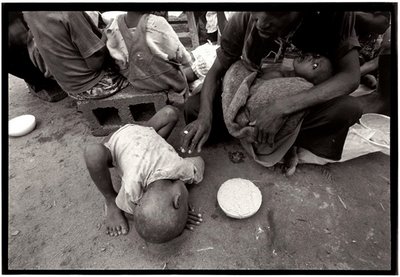
Zway, Ethiopia: Therapeutic Feeding Center
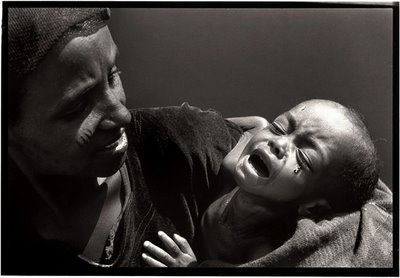
Zway, Ethiopia: Tears flow and flies swarm at the Therapeutic Feeding Center, as Negele Dasiso, a mother from Bulbula, cradles her child, Chana Bite. "Yesterday one child died. This month 15 died in this camp," states Sister Eliza, a nun at the feeding and medical center run by the Salesian Church.
